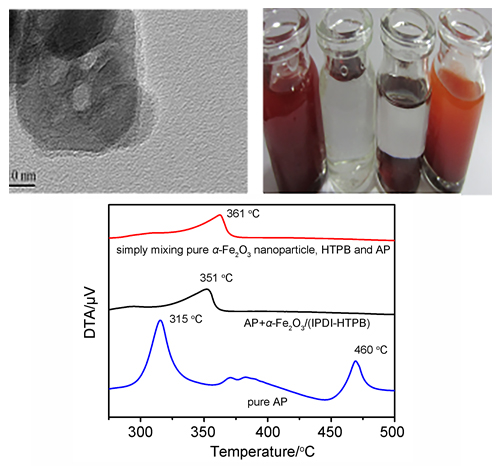[1] Wu, J. J.; Ji, Z. Y.; Shen, X. P.; Miao, X. L.; Xu, K. Q. Acta Chim. Sinica 2017, 75, 1207(in Chinese). (吴佳佳, 季振源, 沈小平, 缪绪立, 徐克强, 化学学报, 2017, 75, 1207.)
[2] Mu, Y.; Jia, F. L.; Ai, Z. H.; Zhang, L. Z. Acta Chim. Sinica 2017, 75, 538(in Chinese). (穆毅, 贾法龙, 艾智慧, 张礼知, 化学学报, 2017, 75, 538.)
[3] Cui, S. Z.; Yang, H. P.; Sun, H. H.; Nie, K.; Wu, J. M. Acta Chim. Sinica 2016, 74, 995(in Chinese). (崔素珍, 杨汉培, 孙慧华, 聂坤, 吴俊明, 化学学报, 2016, 74, 995.)
[4] Padwal, M. B.; Varmal, M. Combust. Sci. Technol. 2018, 190, 1614.
[5] Chang, H. Z.; Zhang, T.; Dang, H.; Chen, X. Y.; You, Y. C.; Schwank, J.; Li, J. H. Catal. Sci. Technol. 2018, 8, 3313.
[6] Niu, H. H.; Zhang, S. W.; Ma, Q.; Qin, S. X.; Wan, L.; Xu, J. Z.; Miao, S. D. RSC Adv. 2013, 3, 17228.
[7] Narayani, H.; Jose, M.; Sriram, K.; Shukla, S. Environ. Sci. Pollut. Res. 2018, 25, 20304.
[8] Shahrousvand, M.; Hoseinian, M. S.; Ghollasi, M.; Karbalaeimahdi, A.; Salimi, A.; Tabar, F. A. Mater. Sci. Eng. C 2017, 74, 556.
[9] Ke, X.; Zhou, X.; Hao, G. Z.; Xiao, L.; Liu, J.; Jiang, W. Appl. Surf. Sci. 2017, 407, 137.
[10] Xu, H.; Wang, X. B.; Zhang, L. Z. Powder Technol. 2008, 185, 176.
[11] Song, L. M.; Zhang, S. J.; Chen, B.; Ge, J. J.; Jia, X. C. Colloids Surf. A 2010, 360, 1.
[12] Atta, A. H.; El-ghamry, M. A.; Hamzaoui, A.; Refat, M. S. J. Mol. Struct. 2015, 1086, 246.
[13] Jadhav, S. A.; Bongiovanni, R. L.; Marchisio, D.; Fontana, D.; Egger, C. Pigm. Resin Technol. 2014, 43, 219.
[14] Iida, H.; Nakanishi, T.; Osaka, T. Electrochim. Acta 2005, 51, 855.
[15] Zhan, J. Y.; Tian, G. F.; Jiang, L. Z.; Wu, Z. P.; Wu, D. Z.; Yang, X. P. Thin Solid Films 2008, 516, 6315.
[16] Liu, J.; Ke, X.; Xiao, L.; Hao, G. Z.; Rong, Y. B.; Jin, C. S.; Jiang, W.; Li, F. S. Propellants Explos. Pyrotech. 2018, 43, 144.
[17] Jin, B.; Peng, R.; Zhao, F.; Yi, J.; Xu, S.; Wang, S.; Chu, S. Propellants Explos. Pyrotech. 2014, 39, 874.
[18] Lu, Y. W.; Zhu, Y. F.; Xu, P. F.; Ye, P.; Gao, B.; Sun, Y.; Guo, C. P. J. Solid State Chem. 2018, 258, 718.
[19] Isert, S.; Groven, L. J.; Lucht, R. P.; Son, S. F. Combust. Flame 2015, 162, 1821.
[20] Hu, L; Ma, Z. Y.; Ji, M. W.; Zhang, L. X. Acta Chim. Sinica 2011, 69, 3028(in Chinese). (胡磊, 马振叶, 纪明卫, 张利雄, 化学学报, 2011, 69, 3028.)
[21] Yin, L.; Chu, J. L. Paint Coat. Ind. 1999, 29, 34.
[22] Hailu, K.; Guthausen, G.; Becker, W.; König, A.; Bendfeld, A.; Geissler, E. Polym. Test. 2010, 29, 513.
[23] Catherine, K. B.; Krishnan, K.; Nina, K. B. J. Therm. Anal. Calorim. 2000, 59, 93.
[24] Yang, R. J.; Ma, Q. Y. J. Solid Rocket Technol. 1991, 9, 78(in Chinese). (杨荣杰, 马庆云, 固体火箭技术, 1991, 9, 78.)
[25] Ganga, T.; Devi, G. T.; Kannan, M. P.; Hema, B. Thermochim. Acta 1996, 285, 269.
[26] Winfried, K. R.; Eli, S. F. J. Phys. Chem. 1970, 74, 3317.
[27] Ma, Z. Y.; Wu, R. J.; Song, J.; Li, C.; Chen, R. Z.; Zhang, L. X. Propellants Explos. Pyrotech. 2012, 37, 183. |
